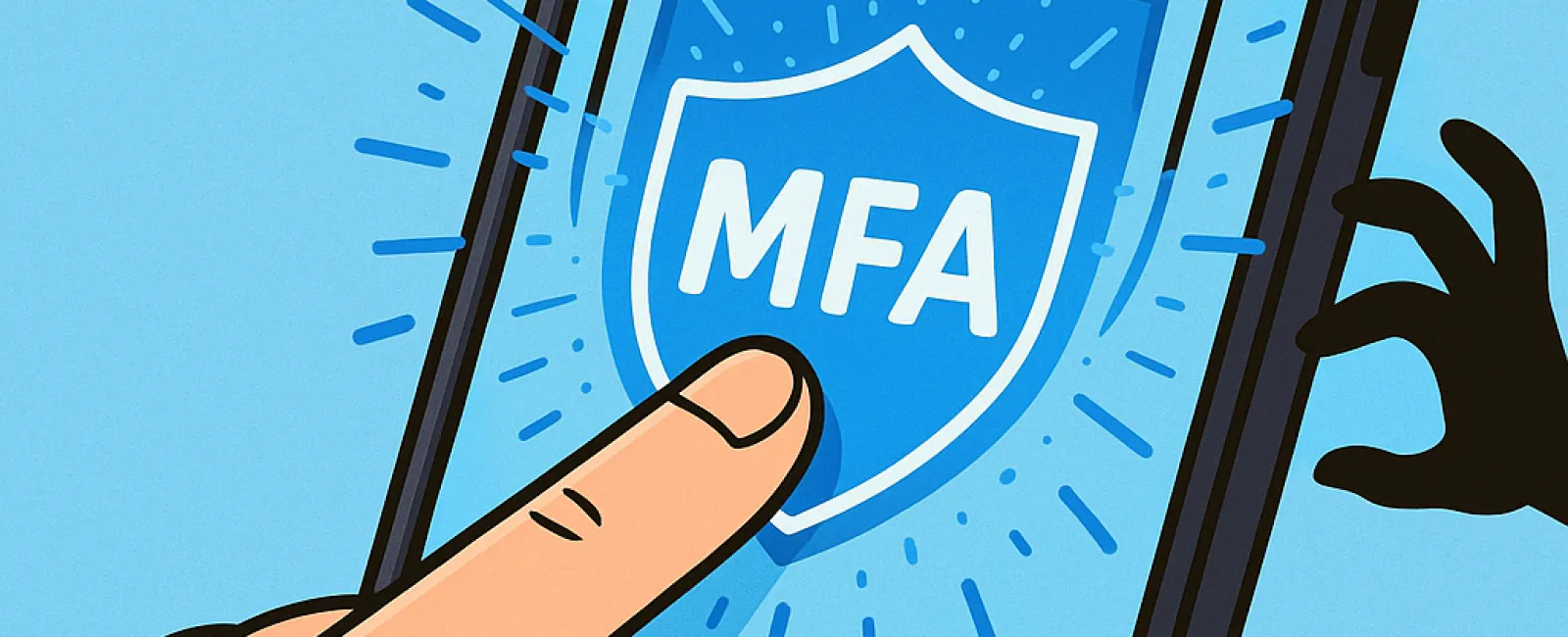October 27, 2025
You wouldn't step into a car without buckling your seat belt, nor would you leave your office door unlocked overnight. So why risk logging online without activating multifactor authentication (MFA)?
MFA acts as a powerful second shield for your digital security. Instead of relying solely on a password—which can be stolen, guessed, or phished—it adds an extra verification step like a text message code, an authentication app prompt, or even a fingerprint scan. This means that even if someone gets hold of your password, they can't enter your account without passing the additional layer of protection.
One Simple Step Provides Unmatched Protection
Think of your password as the lock on your front door; enabling MFA is like arming your home security system each night. It's an effortless extra step that vastly enhances safety. While it might feel optional, having that backup security measure ensures you're protected even if one barrier fails.
MFA involves a quick additional action that confirms it's really you logging in. Known by various names such as "two-step verification," "two-factor authentication," or "one-time password," they all guarantee multiple layers of identity confirmation before access is granted.
The methods include verification emails during account creation, security questions from your bank, text message codes, push alerts, or phone calls. Most of these only require a single tap or a simple code entry.
Everyday Scenarios Where MFA Protects You
While MFA is swift and easy for you—just a quick tap or code input—it significantly complicates the job for hackers. If someone tries to access your account without permission, MFA will trigger a notification or require a code from you, alerting you instantly about the breach. This early warning lets you secure your account by updating your password before any data is compromised.
Additionally, MFA blocks unauthorized access even if a hacker manages to obtain your password—like via phishing or human error. A study by Microsoft revealed that activating MFA lowers the risk of account breaches by over 99.2%, reaching 99.99% protection when fully implemented.
Essential Accounts to Protect with MFA & How to Get Started
Ensure MFA is enabled on your most critical accounts, including:
- Banking and financial applications
- E-mail and cloud storage platforms
- Social media profiles
- Work-related accounts containing client or proprietary data
Setting up MFA is typically straightforward. Most leading service providers offer built-in MFA options—simply select and activate your preferred method to enhance security seamlessly. Using an authenticator app is an excellent way to bolster protection, especially for employee logins.
In summary, enabling MFA is a fast, free, and effective way to block the vast majority of hacking attempts. Taking just a few minutes today to activate it could save you from months or even years of recovering from cyberattacks and data loss in the future.
The easiest path to activating MFA is by reaching out to your IT support provider. A skilled managed service provider (MSP) can simplify the setup and tailor security to your needs. If you're seeking expert cybersecurity guidance, click here or call us at (918) 770-9150 to schedule a 15-Minute Discovery Call with our team today.



